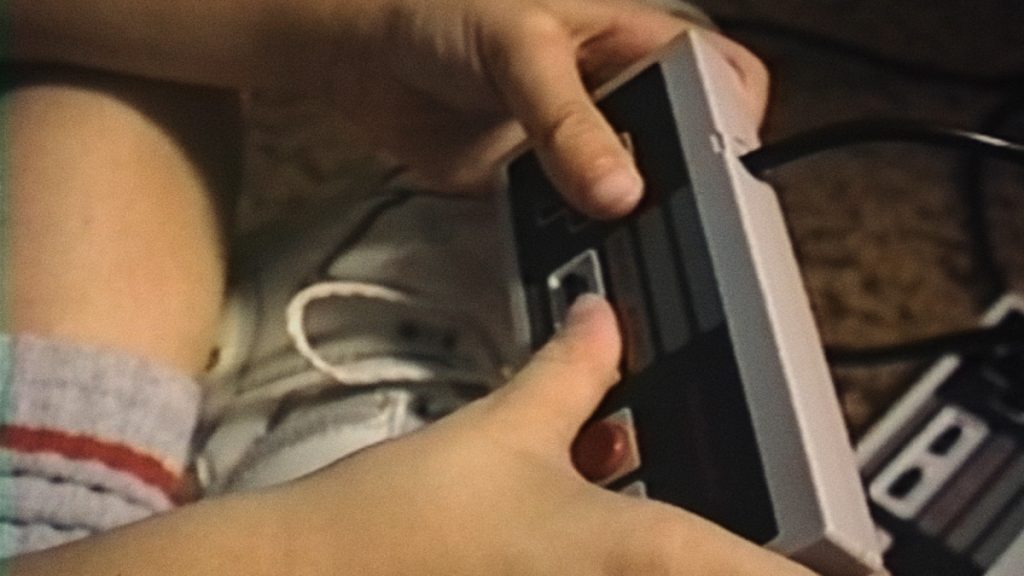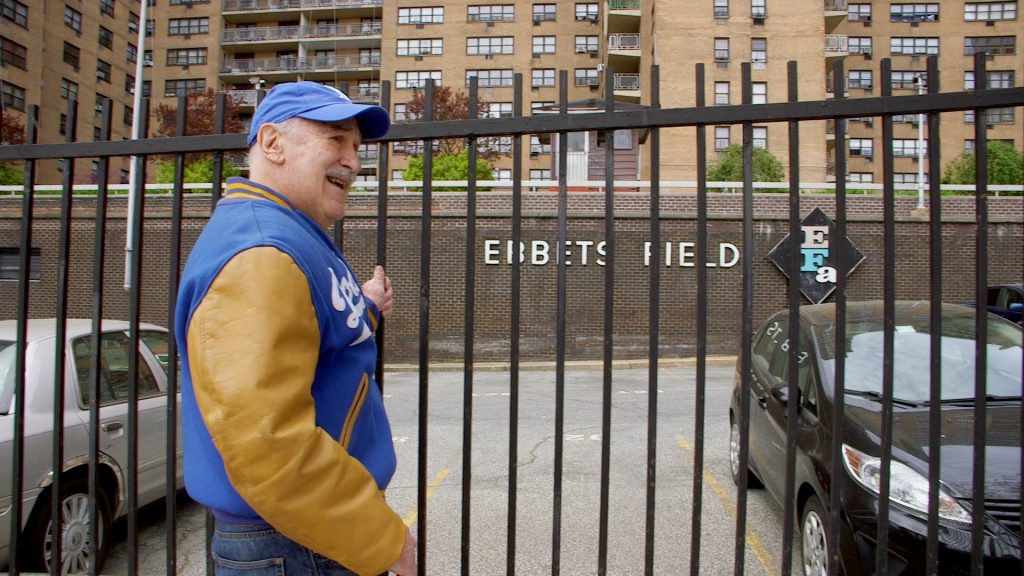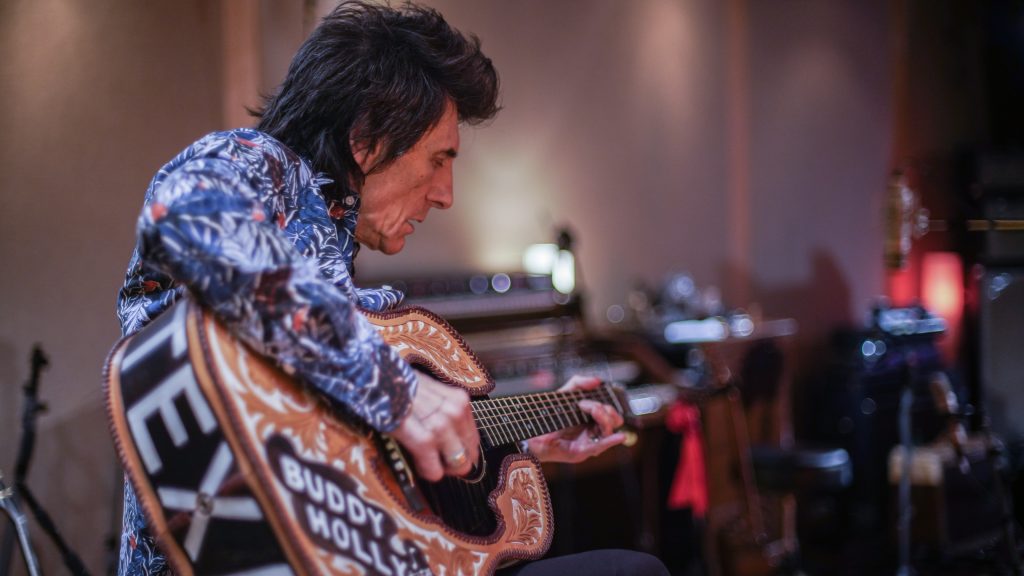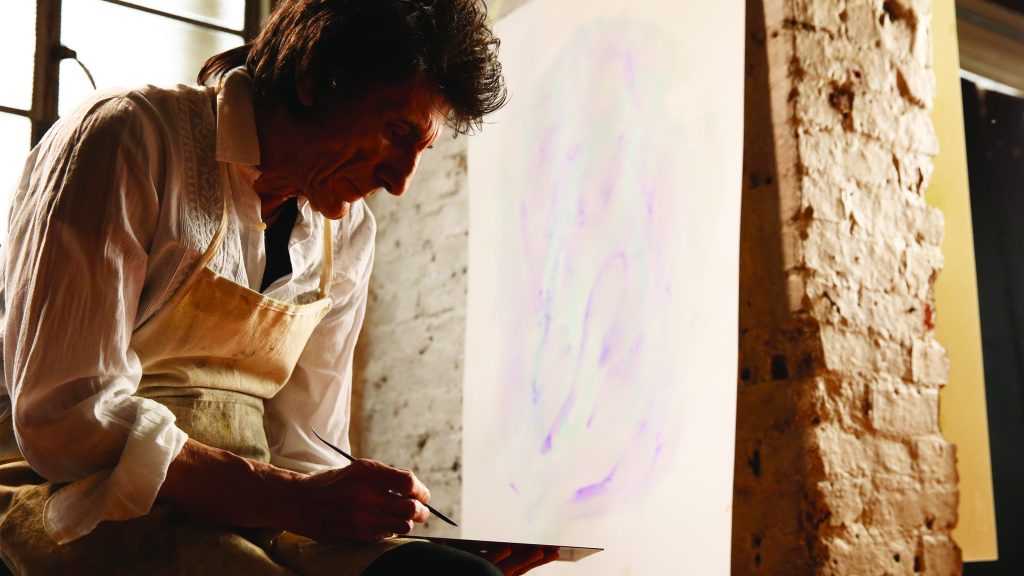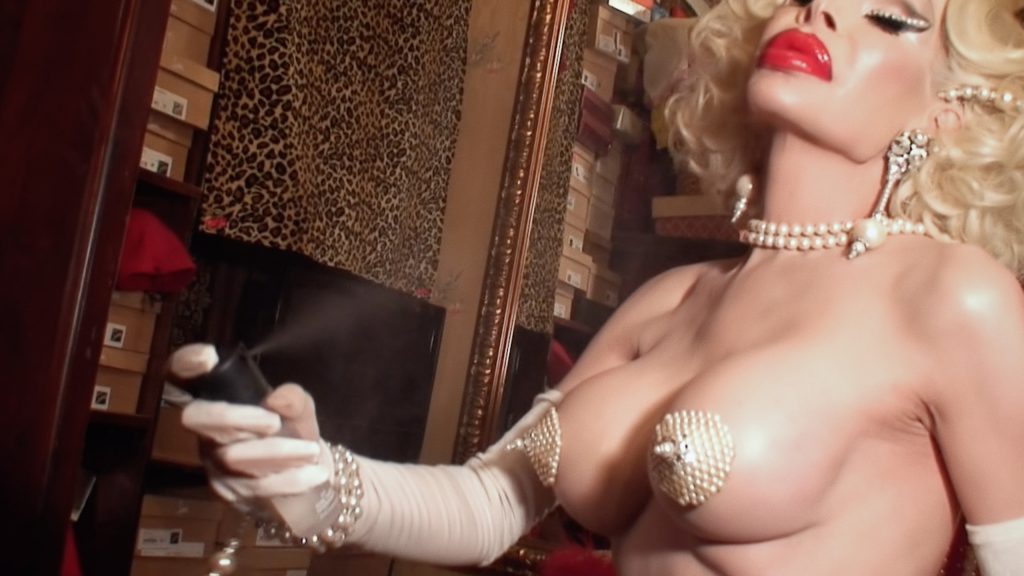October 31, 2020
by Carla Hay

Directed by Brittany Huckabee
Culture Representation: The documentary “How to Fix a Primary,” which is about Abdul El-Sayed’s 2018 campaign to become governor of Michigan, features a racially diverse group of people (white people, African Americans, Asians and Latinos), who are mostly political progressives, discussing the campaign.
Culture Clash: El-Sayed, who is a progressive Democrat, contends that he faced an uphill battle against well-funded establishment factions of the Democratic Party that unfairly squeeze out upstart “outsider” Democratic candidates.
Culture Audience: “How to Fix a Primary” will primarily appeal to people who like watching political documentaries about progressive liberals or “underdog” political candidates.

It’s really no secret that campaign funds and political connections play major roles in the likelihood that a political candidate can get elected. But is the system rigged for “establishment” candidates to get unfair advantages over “outsider” candidates, even those who are from the same political party? In the case of medical doctor Abdul El-Sayed, a progressive Democrat who lost the 2018 primary election to become Michigan’s governor, the answer is a resounding “yes,” according to the documentary “How to Fix a Primary.”
Directed by Brittany Huckabee, “How to Fix a Primary” is a fascinating behind-the-scenes look at El-Sayed’s ill-fated campaign, although at times the movie looks more like an electronic press kit to promote El-Sayed than an objective documentary that takes an unflinching look at any of his flaws. People don’t have to be a Democrat or a progressive liberal to enjoy watching this documentary. However, people who watch “How to Fix a Primary” are more likely to enjoy it if they’re inclined to root for “outsider” political candidates who take bold risks to fight for what they believe, even if the odds and many naysayers/doubters are stacked against these “outsider” candidates.
El-Sayed (who is known as a CNN commentator) is an Egyptian American who is also Muslim. He is very proud of and unapologetic about who he is, but he is also well-aware that some voters automatically won’t support him because of his ethnicity and religion. However, his campaign was geared largely to open-minded progressives who wanted something different from the “status quo” in a Michigan governor.
Born in Detroit in 1984, El-Sayed is a Rhodes Scholar with degrees from the University of Michigan, Oxford University and Columbia University. He served as executive director of the Detroit Health Department, as well as Health Officer for the city of Detroit, from 2015 to 2017. He also used to be an assistant professor in the Department of Epidemiology at Columbia University. El-Sayed married his wife Sarah Jukaku while they were in college in 2006 (she is shown as a supportive spouse in a few scenes in the documentary), and their first child (a daughter named Emmalee) was born during his 2018 Michigan gubernatorial campaign.
Despite his background as a privileged professional, El-Sayed’s overall campaign message was that he was a champion for “everyday people,” and he refused to take campaign money from corporate donors. His candidate platform was largely about reforming Michigan’s government policies to be more uplifting and beneficial to the working-class and poor and to fund his proposed programs mainly by increasing taxes on the wealthy.
Health care, criminal-justice reforms, infrastructure and Michigan’s polluted water crisis were among the top priorities on his agenda. (He is a big proponent of Medicare for All.) If El-Sayed had won the general election, he would have been the first Muslim to become a state governor in the United States. In the movie, he’s shown to be a political candidate who is passionate, articulate and approachable. However, compared to his main Democratic opponents, the documentary portrays him as an under-funded “doomed” candidate because he wasn’t willing to go to certain lengths in order to win.
Within the Democratic Party, he faced stiff competition from two very different middle-aged candidates. Gretchen Whitmer, who won the 2018 primary election and general election to become Michigan’s governor, was considered the “establishment” candidate who got millions in campaign money from corporate donors. She served in the Michigan House of Representatives from 2001 to 2006, and in the Michigan Senate from 2006 to 2015. Shri Thanedar, an Indian immigrant and self-made millionaire entrepreneur, spent his own money on his political campaign. Thanedar used his experience in business and his “political outsider” status as reasons to vote for him because, just like El-Sayed, he promised to shake up Michigan’s government with progressive changes.
Because “How to Fix a Primary” is obviously sympathetic to El-Sayed and his campaign, the documentary takes a very scathing critical look at Whitmer and Thanedar. Whitmer is portrayed as a political hack, a corporate sell-out and someone who relied too heavily on her “Fix the Damn Roads” catchphrase for her campaign. El-Sayed says in the documentary that Michigan’s water crisis should’ve been Whitmer’s bigger priority than fixing roads. Thanedar is portrayed as a power-hungry opportunist, with a history of shady business practices, who wanted to buy his way into becoming Michigan’s governor. El-Sayed’s campaign also accuses Thanedar of not being a true Democrat, based on reports that he chose to run as a Democrat instead of as a Republican because Thanedar thought he would have a better chance of winning as a Democrat.
However valid those criticisms might or might not be, the movie’s biggest shortcoming is that the filmmakers place almost no scrutiny on El-Sayed, who’s portrayed as morally righteous and as close to “perfect” as a politician can be. The reality is that no politician is as “perfect” as this documentary wants El-Sayed to look. In the documentary, the filmmakers do not ask him to reflect on any past personal or professional mistakes and what he learned from them. All of the televised debate footage in the documentary is carefully edited so that only El-Sayed’s best soundbites are used.
It seems like the filmmakers were afraid to expose anything that would make El-Sayed look less than perfect. But by conveniently erasing or not mentioning anything in the film that makes El-Sayed look like a human being who makes mistakes like everyone else does, it actually undermines his calculated efforts to appear to be a “regular guy” fighting for Michigan communities who are underrepresented and often-overlooked. El-Sayed mentions in the documentary that he gets hate mail and he had to hire a security staffer, but that’s standard for anyone running for a high-profile public office.
The people on El-Sayed’s campaign team who get the most screen time are also portrayed as social justice warriors who think they’re immune to corruption and are ready to accuse their opponents of playing dirty. (Almost all of his campaign workers are under the age of 40.) The top-level people on El-Sayed’s team who are featured in the documentary are campaign manager Max Glass, deputy campaign manager Claire Sandberg, policy director Rhiana Gunn-Wright and communications director Adam Joseph.
There’s only one scene in the documentary where El-Sayed is personally confronted by a critic. After a campaign appearance, while he is surrounded by people recording him with their phones, an extreme right-wing YouTube personality named Laura Loomer asks El-Sayed how he can claim to be a devout Muslim and also be an ally to the LGBTQ community, since the Muslim religion teaches that homosexuality is morally wrong. El-Sayed is tactfully gracious in his response: “What’s beautiful about this country is that I choose my own faith, and you choose yours or none at all.”
Loomer tries to press the issue, but El-Sayed eventually cuts off her line of questioning and ends up leaving. As he departs in the hallway, he says to his security personnel about being ambushed by Loomer: “You guys have got to jump on that way faster.” Loomer, who is known for expressing conspiracy theories and anti-Muslim rhetoric, eventually became a political candidate herself: In the 2020 elections, she was the Republican candidate for the U.S. House of Representatives to represent Florida’s 21st congressional district, where Donald Trump lives.
If you were to believe everything presented in this documentary, El-Sayed was the only Democratic candidate who had a “clean” campaign in this Michigan gubernatorial election. Meanwhile, there’s a reason why so many voters mistrust all politicians: There’s a widespread belief that all politicians eventually do secret deals that benefit the politicians, not the people they’re supposed to serve.
But according to Sandberg, progressive Democrats are the most honest factions of the Democratic Party, compared to moderate Democrats who are part of the establishment. In the documentary, she compares the Republican Party and the Democratic Party to feuding crime families: “The best analogy that I can think of for the situation progressives are in to compete in these types of elections is that there’s a war going on between two different crime families. And progressives are legitimate business operators trying to compete against these two warring crime families.”
Sandberg adds of establishment politicians, “They control the process. They control the media. They control the money. And it’s incredibly difficult to take them on.” Later in the documentary, in one of the movie’s most compelling scenes, Sandberg attends a Michigan board of elections hearing where she presents her campaign team’s case that Thanedar should be removed from the ballot because he allegedly collected thousands of fraudulent signatures. El-Sayed’s team wanted the board of elections to investigate and find that Thanedar did not have the minimum 15,000 legitimate voter signatures required to be a candidate for Michigan governor.
Leading up to this crucial hearing, the documentary showed the painstaking work that El-Sayed’s campaign workers put into comparing thousands of signatures against voter registrations, to see if the signatures matched what was on file, and to find any signatures that could be disqualified. For example, voters could not sign election petitions for more than one gubernatorial candidate. Signatures could also be disqualified if they belonged to people who weren’t registered voters at the time they signed.
The board’s decision is what El-Sayed’s team did not expect. But in hindsight, El-Sayed’s campaign staffers say in the documentary that the decision was rigged from the beginning. Sandberg places most of the blame on board of elections member Julie Matuzak, a Whitmer supporter who was an American Federation of Teachers lobbyist and someone whom Sandberg says was also running a “dark money” group that was funneling donations into Whitmer’s campaign. It’s a conflict of interest that would be one of the reasons why Whitmer’s fundraising for this campaign came under legal scrutiny in 2019.
The documentary also shows how El-Sayed’s opponents tried to discredit his eligibility by claiming he hadn’t lived in Michigan long enough to be qualified to run for governor of Michigan. Under Michigan law, a candidate for governor must be a Michigan resident who lived in Michigan for the four consecutive years before the election year. El-Sayed lived and voted in New York City in 2012, but he had been living in Michigan for at least four years when he declared his gubernatorial candidacy in 2017.
However, this question over his eligibility (which was eventually resolved in his favor by a Michigan court) and the media attention about this issue ended up damaging El-Sayed’s campaign, according to Glass, who previously worked on campaigns for Democratic politicians Tulsi Gabbard and Seth Moulton. Gunn-Wright comes right out and says that racism was at the root of the accusation against El-Sayed. Even though the accusation against El-Sayed was proven to be false, it decreased voter confidence in El-Sayed and hurt his fundraising. At one point in the documentary, Glass dejectedly tells campaign workers in a meeting that they only have $474,000 in campaign funds, while Whitmer is estimated to have raised $4.5 million for her campaign.
Money can make or break a campaign, but that’s true for politicians of any political leaning, not just progressive Democrats. And plenty of white politicians have been accused of carpetbagging or not being eligible for a campaign, based on previous residences, so it’s not an accusation that’s unique to non-white candidates. El-Sayed and Glass both comment that when El-Sayed raised $1 million in donations earlier in the campaign, that’s when El-Sayed’s political opponents (Democrats and Republicans) began to see him as a threat, and accusations soon followed that El-Sayed was not an eligible candidate based on his residential history. In other words, money played more of a role than racial identity in El-Sayed being perceived as a threat and targeted for elimination by the competition.
Although the documentary would like to portray Whitmer and Thanedar as the villains in this campaign, it’s clear that high-profile progressives in the Democratic Party weren’t exactly rushing to align themselves with El-Sayed in this campaign. El-Sayed’s campaign team tried in vain for about a year to get the endorsement of Bernie Sanders, who held off on endorsing El-Sayed until just a few days before the primary election day. El-Sayed’s campaign manager Glass comments in the film that although Sanders’ endorsement was appreciated, that public vote of confidence from Sanders was too late.
One exception to El-Sayed’s relative lack of support from high-profile progressive Democrats was Alexandra Ocasio-Cortez, who was an early political ally of El-Sayed’s, before she became a star in the Democratic Party. Ocasio-Cortez and El-Sayed share a kinship because they were in similar situations in the 2018 elections: As young people of color running for political office for the first time, they branded themselves as progressive “outsiders” who want to shake up the establishment. An early scene in “How to Fix a Primary” shows El-Sayed giving Ocasio-Cortez a friendly tour of Detroit. (The Netflix documentary “Knock Down the House” gives further insight into why Ocasio-Cortez won her 2018 election.)
Despite the flaw of being heavily biased in portraying El-Sayed in the best possible light, “How to Fix a Primary” does an admirable job of putting his campaign in a larger context of how much can be bought and sold in an election in order for a candidate to win. It’s not a new issue, nor will this documentary solve the problem. Political corruption and voter mistrust will continue to affect the outcome of elections. But at least the film takes a unique look at the journey that one political candidate took to try to push back against what he sees as a rigged system.
Gravitas Ventures released “How to Fix a Primary” on digital, VOD, Blu-ray and DVD on October 20, 2020.




